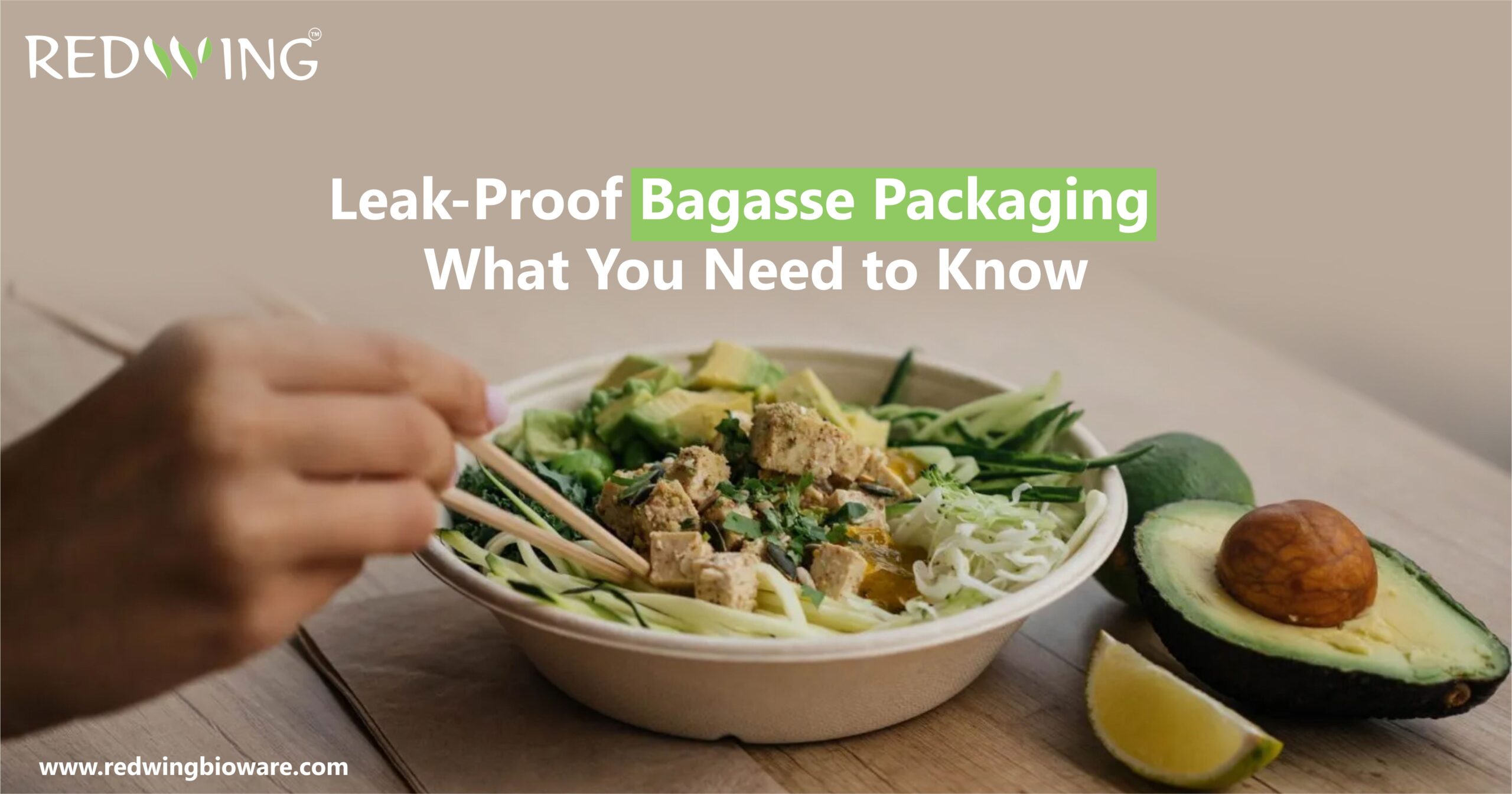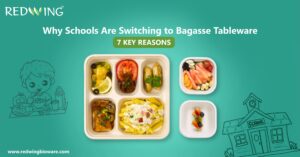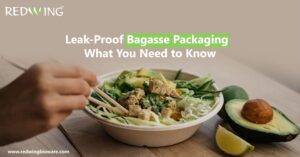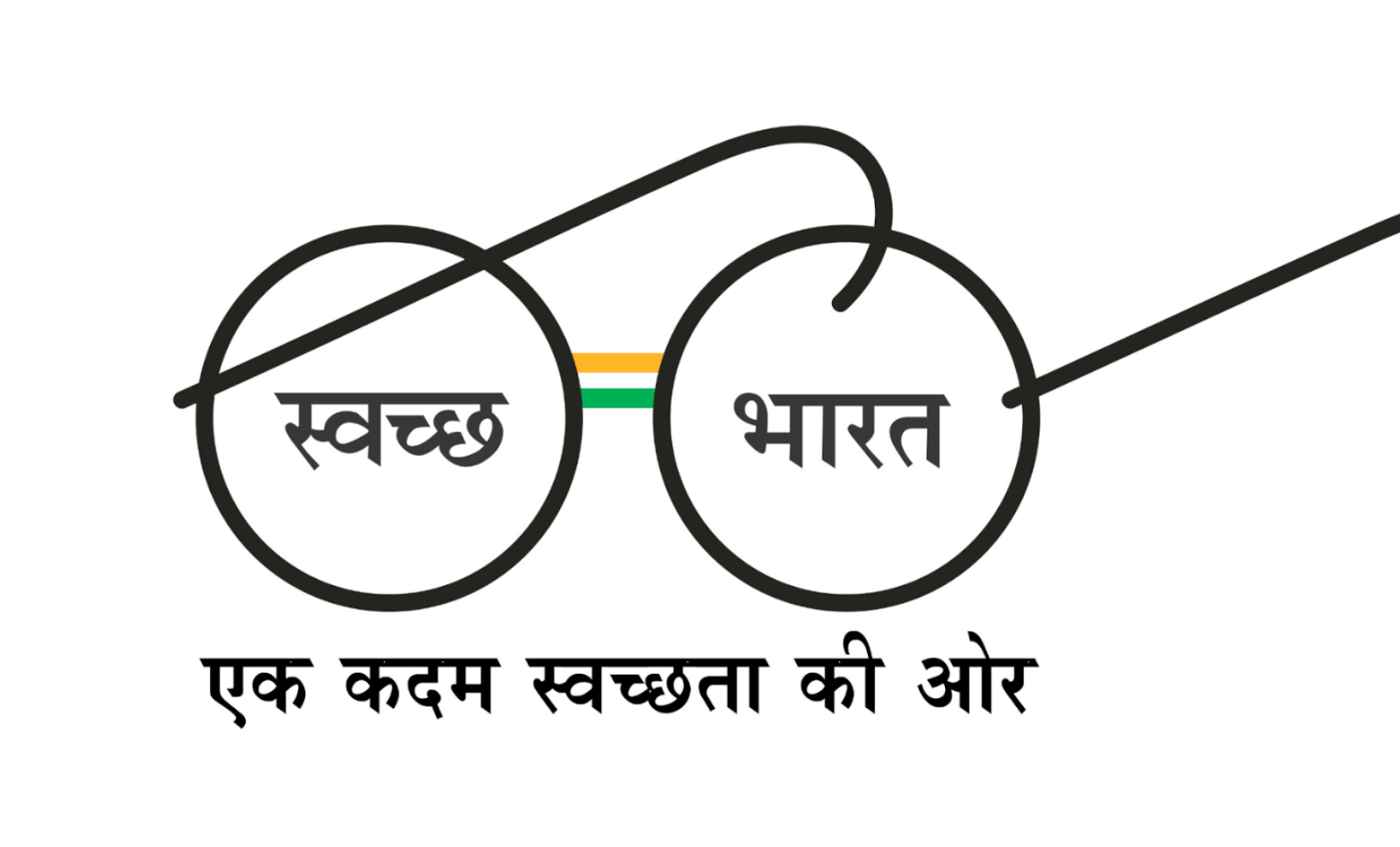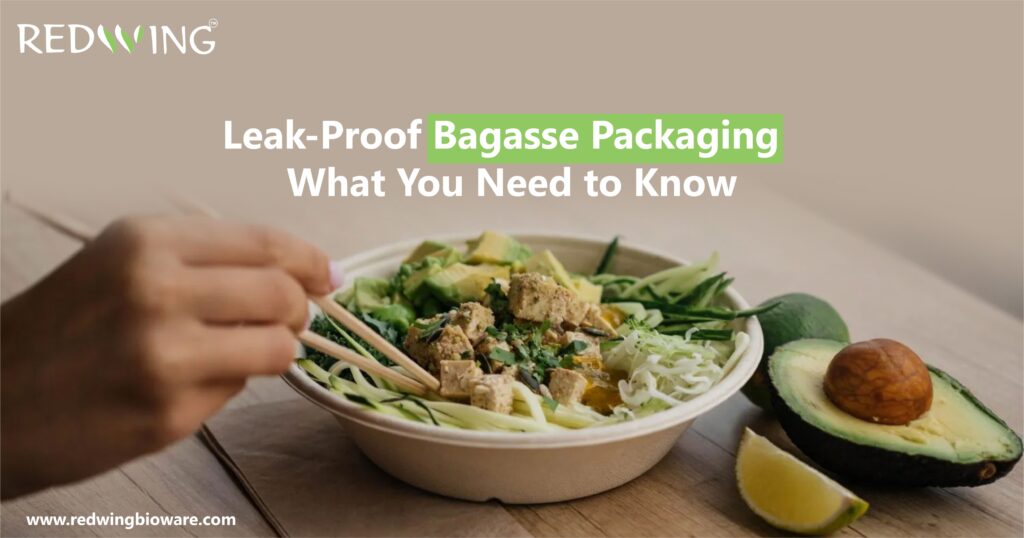
As sustainability takes center stage in consumer behavior and business operations, eco-friendly packaging has emerged as more than just a trend — a necessity. One of the most promising advancements in sustainable packaging is bagasse packaging, made from the fibrous residue of sugarcane after juice extraction. With increasing focus on reducing plastic waste and transitioning to biodegradable alternatives, leak-proof bagasse packaging has become ideal, especially for food service businesses.
In this blog, we’ll walk you through everything you need about leak-proof bagasse packaging — how it works, its benefits, its applications, and why it’s quickly becoming the go-to packaging solution for eco-conscious companies.
What is Bagasse?
Bagasse is the fibrous material left behind after extracting juice from sugarcane stalks. Traditionally considered agricultural waste, it’s now being repurposed into a valuable raw material for manufacturing sugarcane bagasse products, particularly in the packaging industry.
Thanks to its renewable nature, bagasse products present a compelling alternative to plastic and Styrofoam. When processed correctly, bagasse can be molded into various forms — from plates and cups to food containers and trays. More importantly, these products are biodegradable, compostable, and increasingly available in leak-proof formats, making them suitable even for liquid-heavy food items.
The Rise of Leak-Proof Bagasse Packaging
While standard bagasse containers are already widely used in takeout services, there was a time when their use was limited to dry or semi-solid foods. The challenge? Leakage. However, innovation in design and technology has led to the development of leak-proof bagasse packaging that can securely hold greasy, saucy, and liquid-based foods without breaking down or seeping.
These enhancements have expanded the range of applications for bagasse containers, enabling restaurants, caterers, and food delivery services to offer eco-friendly solutions without compromising performance or convenience.
Key Features of Leak-Proof Bagasse Containers
1. Water and Oil Resistance
Modern bagasse packaging is engineered to resist moisture and oil for extended periods. This is made possible through advanced molding techniques and food-safe waterproof coatings (often PLA-based or other compostable bio-laminates) that maintain the product’s biodegradability while ensuring that it doesn’t absorb the food’s oil or moisture.
2. Sturdy and Durable
Despite being plant-based and biodegradable, bagasse containers are surprisingly strong. They can handle hot and cold foods, making them ideal for everything from soups and curries to ice cream. Their rigid structure helps prevent bending or collapsing, even when filled to the brim.
3. Microwave and Freezer Safe
Another significant benefit is versatility in temperature tolerance. Leak-proof bagasse containers can safely be used in microwaves and freezers, offering consumers the convenience they’re used to with plastic — but without the environmental toll.
4. Compostable and Biodegradable
Unlike plastic or Styrofoam, which take hundreds of years to break down, sugarcane bagasse products decompose naturally within 60–90 days under commercial composting conditions. This means less waste in landfills and a smaller environmental footprint overall.
Applications of Leak-Proof Bagasse Packaging
1. Food Delivery Services
Food delivery has skyrocketed in recent years, and the demand for sturdy, safe, and sustainable food containers has increased. Leak-proof bagasse containers are ideal for restaurants offering gravies, soups, or oily foods. They prevent messy spills during transport, enhance customer satisfaction, and uphold your brand’s green image.
2. Catering and Events
From weddings to corporate events, caterers are increasingly expected to deliver delicious food and eco-friendly solutions. Bagasse-based trays, clamshells, and bowls offer the strength and aesthetic appeal needed for professional presentation — while being guilt-free in terms of disposal.
3. Retail and Takeaway Counters
Bagasse packaging is also a favorite at retail food counters, bakeries, and quick-service restaurants. Its natural look complements organic and health-conscious brands, and its leak-proof functionality means it can be used for anything from salads to sauces.
4. Meal Prep Services
Pre-portioned meal kits and prepared foods are often liquid-heavy or oily, which previously required plastic containers. Now, eco-conscious meal prep businesses are embracing sugarcane bagasse products for their combination of sustainability and utility.
Comparing Bagasse Packaging to Other Alternatives
Let’s break down how bagasse containers stack up against other types of packaging:
| Feature | Plastic | Styrofoam | Paper | Bagasse |
| Biodegradable | No | No | Partially | Yes |
| Compostable | No | No | No | Yes |
| Leak-Proof | Yes | Yes | No | Yes (with coating) |
| Microwave Safe | Some | No | Yes | Yes |
| Eco-Friendly | No | No | Moderate | High |
| Renewable Material | No | No | Yes | Yes |
Leak-proof bagasse packaging provides the best of all worlds — convenience, performance, and planet-friendliness.
Read More: Why Bagasse is the Best Packaging for Ice Cream & Salads
How to Choose the Right Bagasse Products
Here are a few tips when selecting sugarcane bagasse products for your business:
- Check for Leak-Proof Certification: Not all bagasse containers are leak-proof. Look for product specifications or test reports.
- Assess Coating Type: Ensure any waterproofing is compostable (e.g., PLA or water-based coatings).
- Choose Sizes According to Use: From 180ml bowls to 1000ml clamshells, choose container sizes that fit your menu offerings.
- Brand with Custom Printing: Some suppliers offer eco-friendly printing options so you can brand your bagasse packaging without harming the environment.
Final Thoughts: Why Bagasse is the Future of Sustainable Packaging
In a world where consumers and businesses increasingly prioritize sustainability, leak-proof bagasse packaging is more than an option — a game-changer. It combines environmental responsibility with practical benefits that modern food businesses require. Whether running a restaurant, launching a cloud kitchen, or managing a catering company, switching to bagasse containers can significantly elevate your eco-credentials while keeping your operations efficient and reliable.
Partner with Redwing Bioware: Your Trusted Bagasse Product Manufacturer
If you’re looking for a reliable supplier of high-quality bagasse packaging, look no further than Redwing Bioware. As a forward-thinking manufacturer of sugarcane bagasse products, Redwing Bioware specializes in creating leak-proof bagasse containers that meet the highest sustainability, performance, and design standards.
With various food containers, bowls, and trays in multiple sizes and specifications, Redwing Bioware ensures that businesses like yours can access the best sustainable packaging. Whether you’re just beginning your journey toward eco-friendly operations or looking to expand your existing green initiatives, Redwing Bioware has the products and expertise to support your goals.
Reference:
Bagasse by Wikeidia[1].
Bagasse packaging is made from bagasse; the fibrous byproduct left after extracting juice from sugarcane. Instead of being discarded as agricultural waste, bagasse is molded into eco-friendly packaging items such as plates, bowls, trays, and containers.
Leak-proof packaging prevents liquids, oils, and moisture from escaping or seeping through the container. FoodFood packaging ensures the safe handling of items like soups, gravies, and oily dishes. Leak-proof bagasse packaging uses specialized coatings or compact molding techniques to make plant-based containers resistant to leaks, making them practical for delivery and dine-in use.
As of the latest update, sugarcane bagasse plates fall under the category of biodegradable tableware. India’s GST (Goods and Services Tax) rate is 5% for eco-friendly disposable items. However, tax rates can be revised, so it’s best to confirm with official GST portals or a tax consultant.
Bagasse-based packaging material is created from the pulp residue of sugarcane after juice extraction. This fibrous material is processed into molded packaging such as containers, clamshell boxes, plates, and trays. It’s considered renewable, compostable, and suitable for food contact.
Yes, bagasse packaging is biodegradable. Since it’s made from natural sugarcane fibers, it breaks down naturally in the environment, usually within 60–90 days in commercial composting conditions. Unlike plastic, which can take hundreds of years to decompose, bagasse packaging leaves behind no harmful residues.

